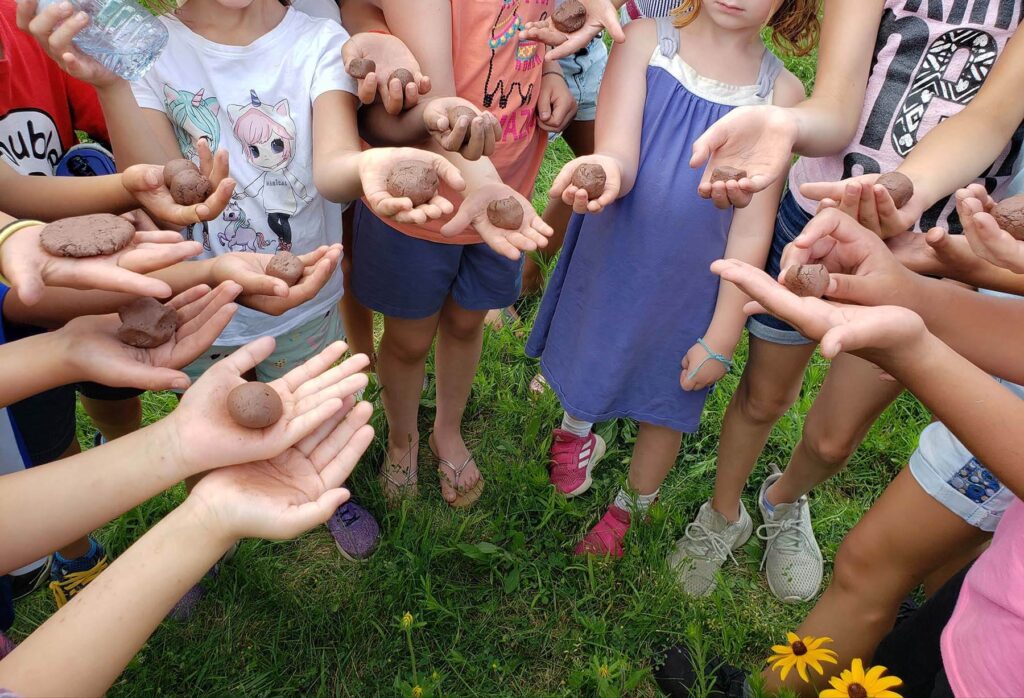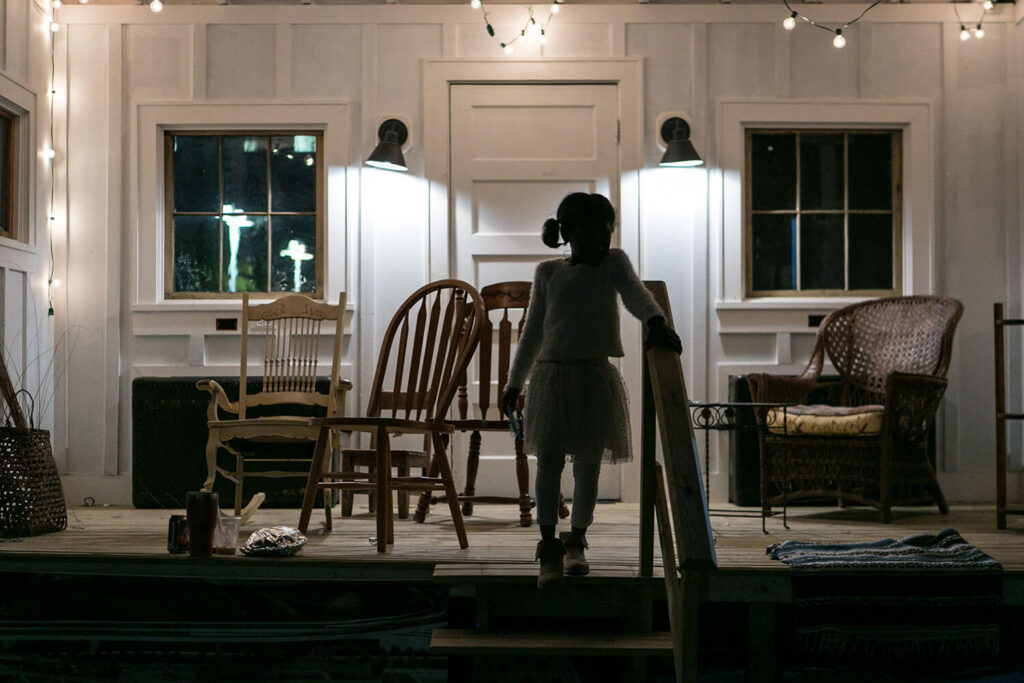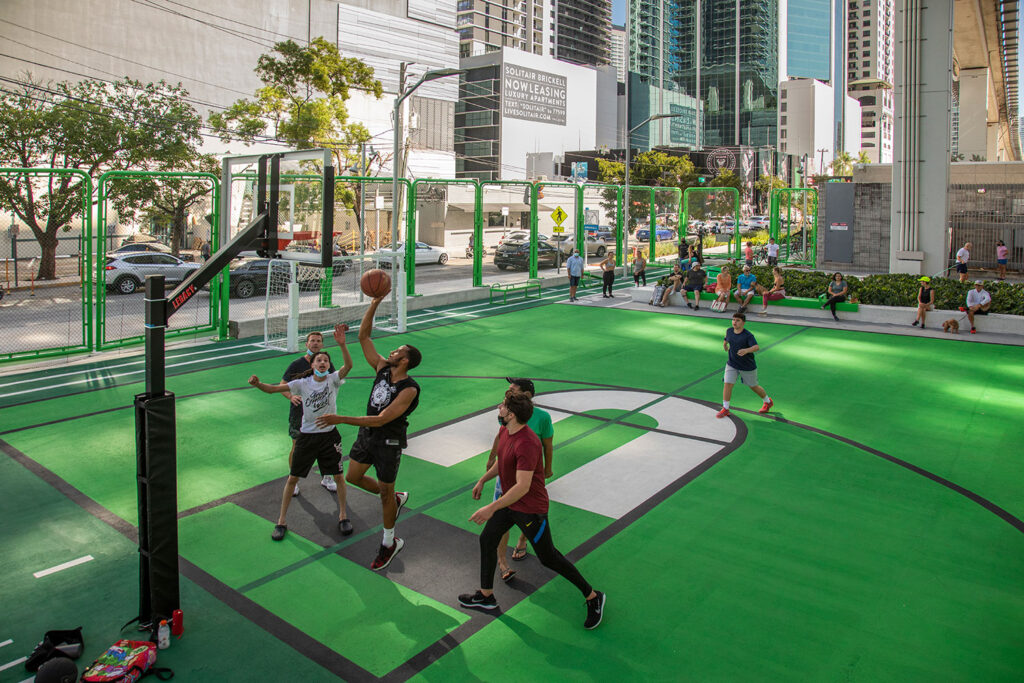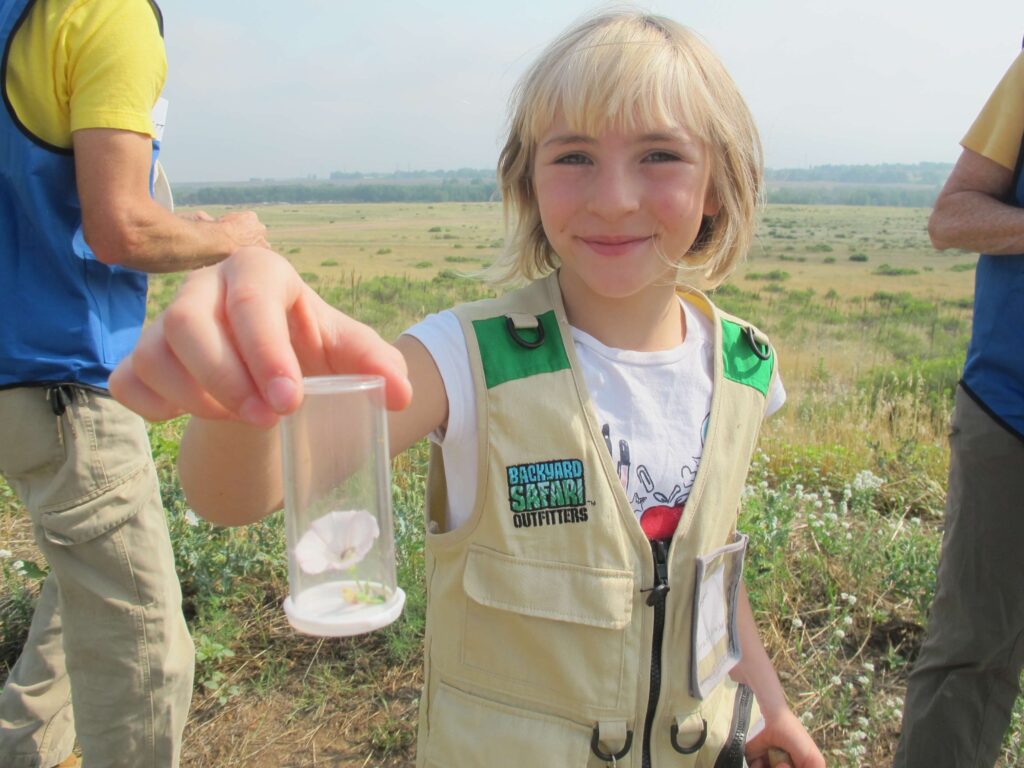Would you like to showcase your own work to embed equity in your infrastructure reuse project?
Transitioning Community Engagement into a Live Classroom 

Students playing with seed bombs along The Meadoway. Credit: Toronto and Region Conservation Authority
The Meadoway is an ambitious city-building initiative that stretches across 34 densely populated neighborhoods in the Greater Toronto Area. Transforming the barren mowed grass of a hydro corridor into hundreds of acres of vibrant meadow habitat, The Meadoway will feature 10 miles of multi-use trails and critical ecosystem connections for Toronto’s unique ravine system. The phased project will see full restoration of meadow habitat by the end of 2023, with completion of the trail network targeted for 2027.
A core pillar of The Meadoway is community engagement and education to ensure long-term stewardship of this transformed green corridor. As the result of a unique partnership with local schools, thousands of students have taken part in activities in the corridor since the project began, urban gardens, nature viewing stations, and new pedestrian bridges offer myriad opportunities for residents, visitors, and students to experience The Meadoway.
In the beginning phases of the project, The Meadoway saw the transformation of the corridor as an easy sell offering long term improvements and readily accessible green space. However, for those who live along the corridor, the idea of construction in their backyards was less attractive. As part of the planning process the project team knew that listening to the concerns, feedback, and visions of the abutting neighbors was essential to ensuring The Meadoway would truly be a beneficial project for the land and community.
To help get a pulse on the community during the project planning process, the project team created a Community Liaison Committee which was comprised of small groups of 15-20 residents, community groups, and business owners to provide direct feedback and inform The Meadoway’s advancement. The Meadoway had an open call for the Committee and took a proactive approach to community engagement. Public events, including open houses, were transparent about the project’s progress, impacts, and goals and offered a variety of ways for community members to engage with the proposed project, from interactive 3D maps to kid-friendly activities.
For The Meadoway, youth engagement remains an essential pillar of the project. As part of the launch of this new public space, various partnerships were made with educators and teachers to develop a curriculum to share with schools adjacent to the corridor. The curriculum offered tools and materials for teachers to embed lessons about restoration and ecology into their everyday curriculum and use of The Meadoway as an outdoor classroom to do so. Every spring, The Meadoway organizes spring planting field trips where teachers can take their classrooms to The Meadoway and help with meadow restoration projects. The program has proven very successful and now schools outside of the immediate vicinity participate as do a variety of other community groups
Upon completion, The Meadoway hopes to inspire the transformation of energy corridors across Canada and beyond, serving as a model project for pairing infrastructure re-use with ecological restoration to create community-driven and serving urban green.
Project Org
The MeadowayRelated Toolkit Section
Build PartnershipsRelated Tool
REVIEW YOUR COMMUNITY NETWORKThe Meadoway is an ambitious city-building initiative that stretches across 34 densely populated neighborhoods in the Greater Toronto Area. Transforming the barren mowed grass of a hydro corridor into hundreds of acres of vibrant meadow habitat, The Meadoway will feature 10 miles of multi-use trails and critical ecosystem connections for Toronto’s unique ravine system. The phased project will see full restoration of meadow habitat by the end of 2023, with completion of the trail network targeted for 2027.
A core pillar of The Meadoway is community engagement and education to ensure long-term stewardship of this transformed green corridor. As the result of a unique partnership with local schools, thousands of students have taken part in activities in the corridor since the project began, urban gardens, nature viewing stations, and new pedestrian bridges offer myriad opportunities for residents, visitors, and students to experience The Meadoway.
In the beginning phases of the project, The Meadoway saw the transformation of the corridor as an easy sell offering long term improvements and readily accessible green space. However, for those who live along the corridor, the idea of construction in their backyards was less attractive. As part of the planning process the project team knew that listening to the concerns, feedback, and visions of the abutting neighbors was essential to ensuring The Meadoway would truly be a beneficial project for the land and community.
To help get a pulse on the community during the project planning process, the project team created a Community Liaison Committee which was comprised of small groups of 15-20 residents, community groups, and business owners to provide direct feedback and inform The Meadoway’s advancement. The Meadoway had an open call for the Committee and took a proactive approach to community engagement. Public events, including open houses, were transparent about the project’s progress, impacts, and goals and offered a variety of ways for community members to engage with the proposed project, from interactive 3D maps to kid-friendly activities.
For The Meadoway, youth engagement remains an essential pillar of the project. As part of the launch of this new public space, various partnerships were made with educators and teachers to develop a curriculum to share with schools adjacent to the corridor. The curriculum offered tools and materials for teachers to embed lessons about restoration and ecology into their everyday curriculum and use of The Meadoway as an outdoor classroom to do so. Every spring, The Meadoway organizes spring planting field trips where teachers can take their classrooms to The Meadoway and help with meadow restoration projects. The program has proven very successful and now schools outside of the immediate vicinity participate as do a variety of other community groups
Upon completion, The Meadoway hopes to inspire the transformation of energy corridors across Canada and beyond, serving as a model project for pairing infrastructure re-use with ecological restoration to create community-driven and serving urban green.
Share this Case Study


